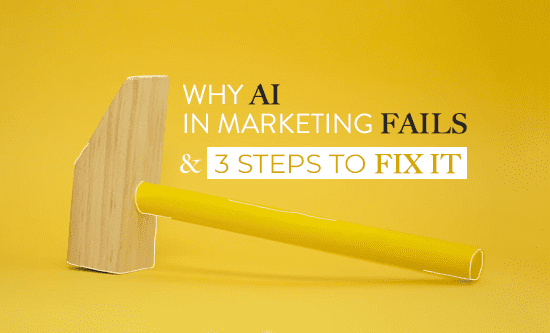Marketers around the world are increasingly looking towards artificial intelligence (AI) as a means of improving their service and boosting their customer experience offerings. By investing in AI technology, many hope to be able to provide customers with relevant offers, communications and experiences. While this seems straightforward in theory, it remains to be seen if marketers are actually making full use of their AI investments.
At Digital Alchemy we have seen countless cases where marketers have invested significant time and resources into AI, only to sit back, relax, and wait for the fruits of their labour to develop organically. Despite such wishful thinking, it appears that time and time again, this approach yields nothing but disappointing results.
Because, here’s the thing, using AI to engage customers is an active sport. Typically when the results from your AI engine are so-so, you need to start asking yourself how good your library of offers was in the first place. Do you have enough content and offers or is your AI engine choosing the least worst option from a range of offers and content that are really just about what you want to say?
There are a few key principles that can be applied to every offer library. Whether your organisation is servicing thousands of people across the globe, or a ‘mom & pop’ shop that caters to your local community, the principles behind your offer library are the same.
Here are 3 steps to ensure you have a robust offer library:
- Recent: offers must be continually updated to ensure that customers can find things of interest to them. If offers stretch for months at a time, not only will they lose their appeal, but it’ll also be more difficult to calculate return on investment.
- Variety: while options are important, the last thing you want is to confuse customers with too many similar alternatives (paradox of choice). Provide a wide variety of choices so that they can easily choose what is most relevant to them.
- Healthy quantity: quite simply, the more offers that are available, the easier it is for an AI recommendation engine to do its job. For example, by analysing 1,000 offers, it is much more likely that customers will receive offers specific to their tastes and requirements.
In addition to having a library stocked full of offers, it’s also important to make sure that your offers match your broader campaign objectives. For example, if return-customers receive offers that are targeted towards new customers, they will lose interest very quickly. With the help of AI recommendation engines, you are able to filter results purely off categories and other key words.
As nice as it’d be, unfortunately it’s simply not possible to implement AI and call it a day. Instead, you must invest time, forethought and effort to make it work. AI can help you make smarter decisions, but it can’t turn a frog into a prince. If you really want to crack the relevance nut, you need to be able to create a library of content and offers that is fresh, has enough variety, and a healthy quantity for AI to choose from.
Want more information on how you can make your AI recommendations work for you? Get in touch here
 by Angel Chen, Product Manager at Digital Alchemy.
by Angel Chen, Product Manager at Digital Alchemy.
Angel is passionate about delivering products that solve business problems. Find more of her thought-provoking pieces on dynamic decisioning and data-driven marketing on our Blog.
[pardot-form id=”46577″ title=”Blog Sign up test1″]



